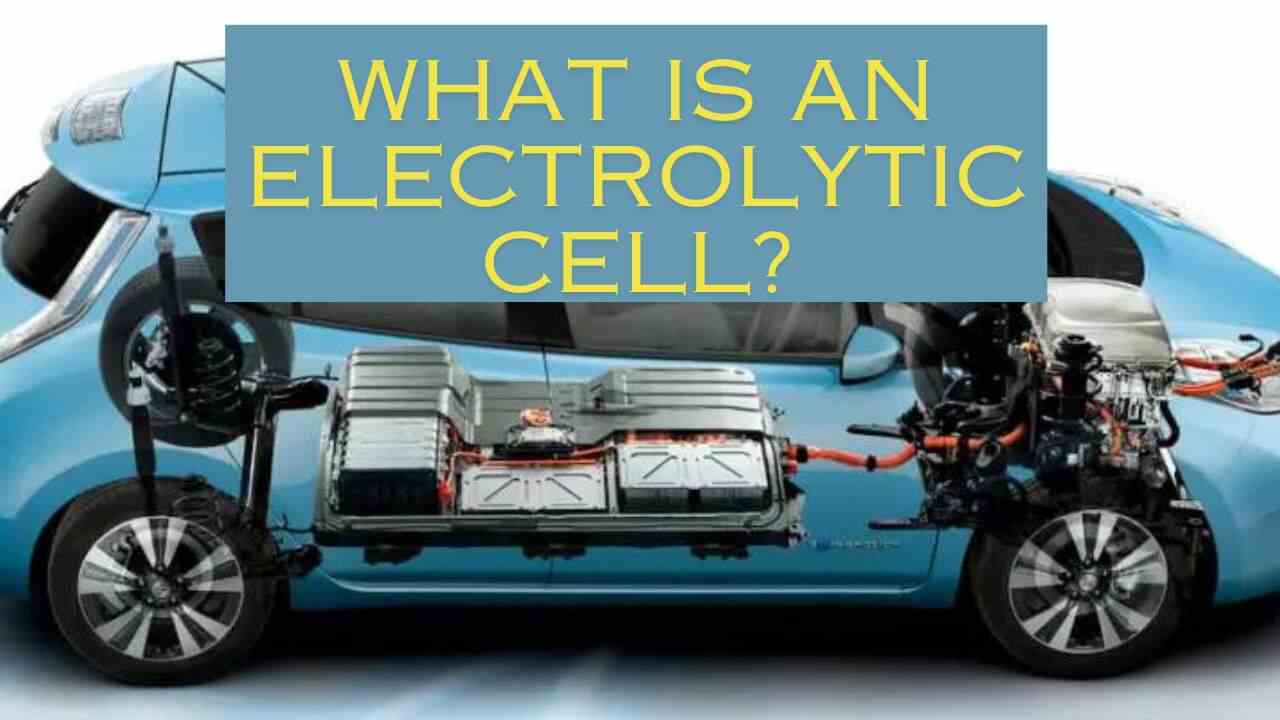
What is an electrolytic cell?
An electrolytic cell is a type of electrochemical cell used to drive a non-spontaneous redox reaction through the process of electrolysis, where an electrical current is passed through an electrolyte solution containing ions, causing the ions to migrate to the electrodes and undergo oxidation or reduction.
What are the components of an electrolytic cell?
The main components of an electrolytic cell are an
- Electrolyte
- direct current (DC) supply
- two electrodes (anode and cathode).
The electrolyte is a substance that contains free ions and conducts electricity. The DC supply provides the energy necessary to create or discharge the ions in the electrolyte. The electrodes are electrical conductors that provide the physical interface between the electrical circuit providing the energy and the electrolyte.
What is the role of the anode and cathode in an electrolytic cell?
The anode is the electrode where oxidation occurs, and it is positively charged. The cathode is the electrode where reduction occurs, and it is negatively charged. In an electrolytic cell, oxidation of ions or neutral molecules occurs at the anode, and reduction of ions or neutral molecules occurs at the cathode.
What is electrolysis used for?
Electrolysis is used for the separation of elements from naturally occurring sources, such as ores, and for the production of pure metals from their oxides. It is also used in the production of oxygen and hydrogen gas from water and in the electroplating of metals.
What is the difference between an electrolytic cell and a galvanic cell?
The main difference is that a uses an external power source to drive a non-spontaneous redox reaction,
| Electrolytic cell | Galvanic cell |
|---|---|
| Uses an external power source to drive a non-spontaneous redox reaction | Generates electrical energy from a spontaneous redox reaction |
| An electrical current is used to drive the reaction | The reaction generates the electrical current |
What is the difference between electrolysis and electroplating?
Electrolysis is a general term that refers to the process of using electricity to drive a chemical reaction, while electroplating is a specific application of electrolysis where a thin layer of metal is deposited onto a surface. In electroplating, the metal being deposited is the cathode, and the object being plated is the anode.
What are the applications of electrolysis?
Electrolysis has numerous applications,
- The production of pure metals
- The electroplating of metals
- The production of oxygen and hydrogen gas
- The separation of elements from naturally occurring sources.
- Production of batteries
- The treatment of water
- Production of chemicals.
What are the advantages and disadvantages of using an electrolytic cell?
Advantages of using an electrolytic cell:
| Production of Pure Metals: | Electrolysis can produce pure metals, which is useful in various industries such as electronics, aerospace, and automotive. |
| Continuous Process: | Electrolysis is a continuous process, which makes it efficient in terms of production. |
| Production of Industrial Chemicals: | Electrolysis can be used to produce large quantities of industrial chemicals such as sodium hydroxide and chlorine at reasonable costs and acceptable levels of purity. |
Disadvantages of using an electrolytic cell:
| High Energy Requirement: | The supply of energy required for electrolysis is very high, and it mainly uses electricity produced by burning fossil fuels, which harms the environment. |
| Land Resource Consumption: | Running electrolysis plants takes up valuable land resources. |
| Waste Disposal: | Electrolysis-based industries produce and release large amounts of effluents as wastes, which can aid pollution if not discharged properly. |
| Cost-effectiveness: | The main disadvantage of an electrolytic cell is that it depends on an external source of electrical energy, which further violates the cost-effectiveness of the entire system. |
What are some applications of electrolytic cells?
| Extraction of metals from their ores: | Electrolysis is used to extract metals like aluminum, lithium, and sodium from their ores. |
| Electroplating: | Electrolysis is used to electroplate metals onto other metals or objects to improve their appearance, durability, or electrical conductivity. |
| Production of chemicals: | Electrolysis is used to produce chemicals like chlorine, sodium hydroxide, and hydrogen gas. |
| Production of oxygen gas and hydrogen gas: | Electrolysis is used to produce oxygen gas and hydrogen gas from water. |
| Production of pure metals: | Electrolysis is used to produce pure metals in the purest possible form, which is useful in various industries such as electronics, aerospace, and automotive. |
| Continuous process: | Electrolysis is a continuous process, which makes it efficient in terms of production. |
